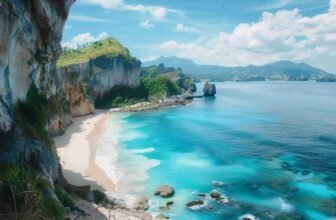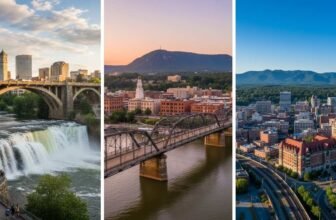
Some trails steal your breath before you even take the first step—not from exhaustion, but from sheer awe. The kind that makes your heart thump louder than your boots on the dirt.
Whether you crave misty forests, sunlit canyons, or peaks that feel close enough to touch the clouds, the right park gives you more reward for every ounce of effort.
In this guide, you’ll find the ultimate balance—places where the payoff hits hard without breaking your back. So lace up, breathe deep, and let’s count down the parks that deliver the most beauty for every step you take.
1. Yosemite National Park, California

Few places hit that sweet spot between jaw-dropping scenery and easy accessibility quite like Yosemite. It’s one of those rare parks where you don’t need to be an expert hiker to feel like you’ve just stepped into a postcard. Within minutes of driving through the valley, you’re surrounded by towering granite walls, cascading waterfalls, and meadows so lush they look painted on. Whether you’re watching the sun spill over Half Dome at sunrise or standing at the base of Yosemite Falls, the “effort vs. reward” ratio here is off the charts.
The park’s layout makes it simple for anyone — from casual day-trippers to seasoned trekkers — to experience something remarkable. Easy hikes like Mirror Lake Trail or Bridalveil Fall deliver grand payoffs without the grueling miles. For those who crave a little challenge, the Mist Trail to Vernal Fall adds just enough sweat to make the view feel earned. And when the crowds thin in the evening, Yosemite Valley takes on this magical hush that feels almost otherworldly.
Even outside the valley, the park keeps rewarding you — Glacier Point, Tuolumne Meadows, and Mariposa Grove of Giant Sequoias all showcase Yosemite’s diversity without demanding too much effort. It’s a park that makes you feel small in the best possible way.
Key Info:
- Best Months to Visit: May to October
- Top Easy Hikes: Mirror Lake Trail, Cook’s Meadow Loop, Lower Yosemite Falls Trail
- Don’t Miss: Glacier Point at sunset, Tunnel View overlook
- Pro Tip: Arrive early — parking fills fast, especially on summer weekends
2. Zion National Park, Utah
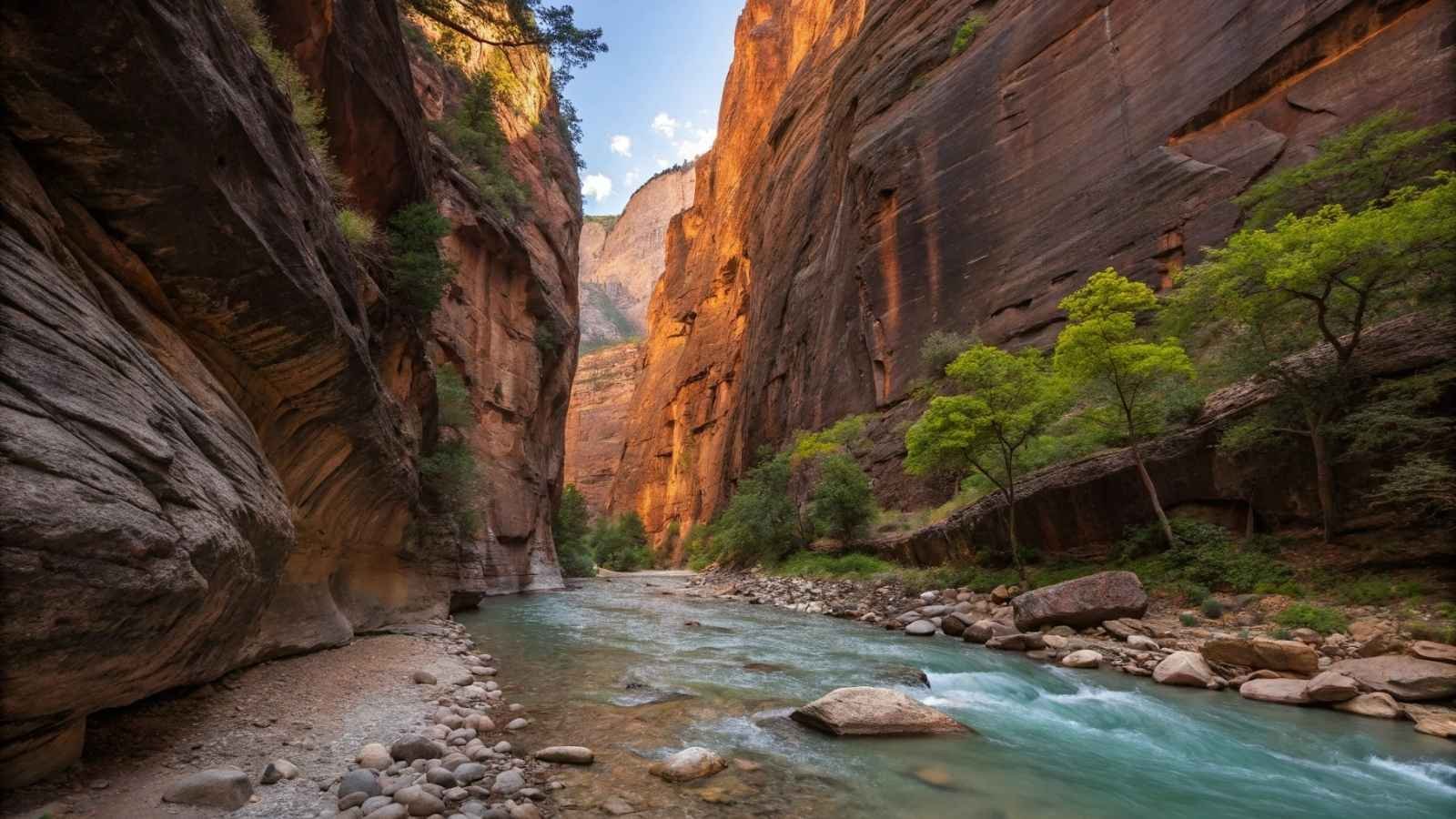
Zion feels like a natural cathedral carved from red rock, where every curve of the canyon seems crafted for awe. What makes it stand out isn’t just its beauty — it’s how accessible those views are. Step off the shuttle at almost any stop, and you’re already surrounded by some of the most dramatic landscapes in the American Southwest.
For an easy adventure with world-class rewards, The Riverside Walk leads straight to the gateway of The Narrows, a slot canyon hike that’s equal parts thrilling and surreal. If you’re up for something more iconic, Angels Landing offers a challenge that rewards bravery with sweeping canyon vistas that stay burned into memory. But even if you skip the chains, hikes like Canyon Overlook Trail deliver stunning panoramas with far less effort.
What makes Zion so special is how much it gives back for every step taken. You don’t need to go deep into the backcountry to feel like you’ve uncovered something wild — the canyon walls, wildlife, and desert light do the work for you.
Key Info:
- Best Months to Visit: April to June, September to November
- Top Easy Hikes: Canyon Overlook Trail, Riverside Walk, Lower Emerald Pool
- Can’t-Miss View: Watchman Trail at sunrise
- Pro Tip: Use the free shuttle; parking inside the canyon is very limited
3. Grand Teton National Park, Wyoming
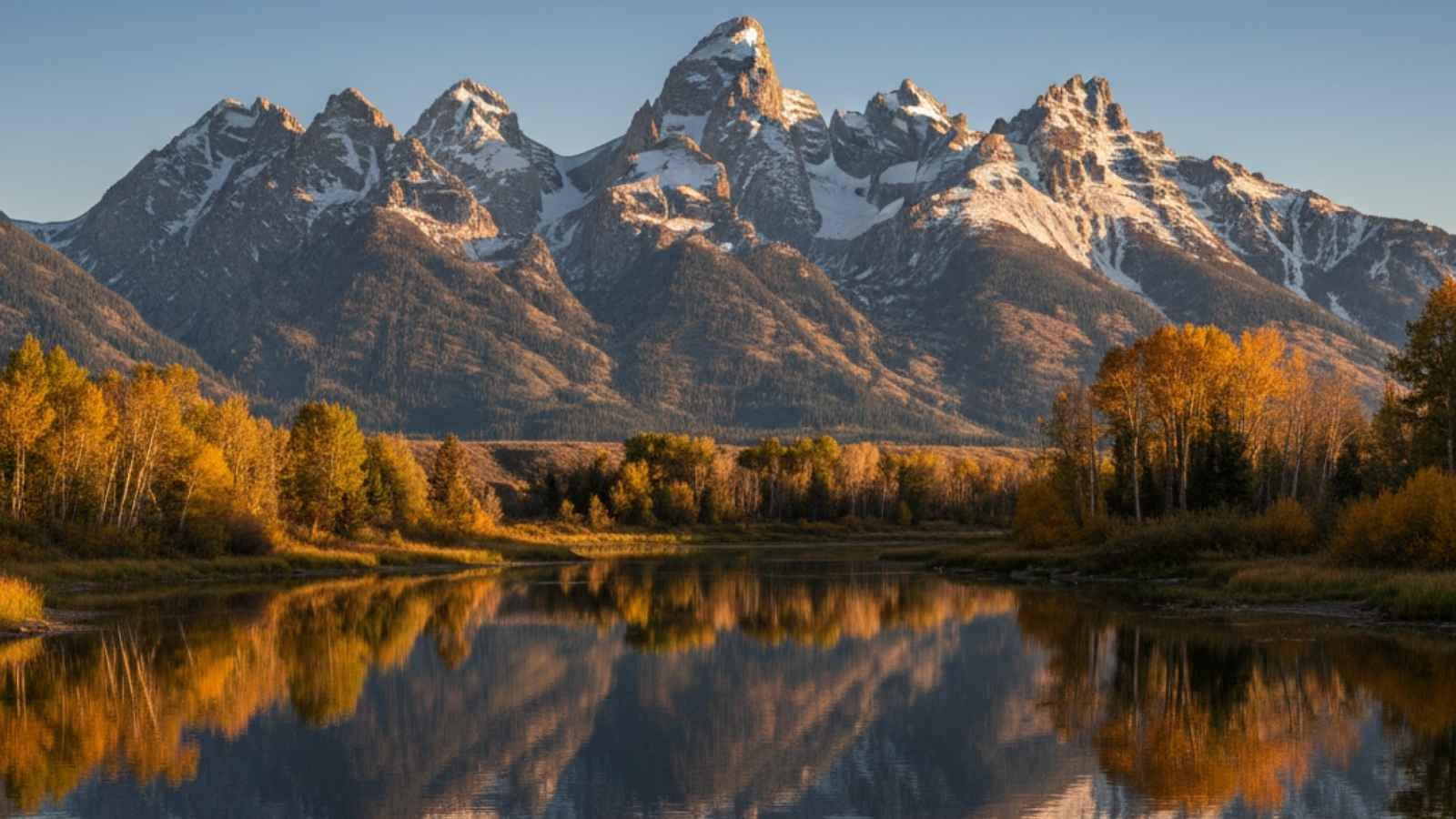
Grand Teton delivers instant alpine drama — rugged peaks, mirror lakes, and meadows teeming with wildlife — all without needing a massive expedition. Few parks offer this much reward for so little logistical hassle. Drive along the Teton Park Road, and every pullout feels like it could be a magazine cover. That’s how visually rich this park is.
The real charm of the Tetons lies in how approachable it feels. Trails like Jenny Lake Loop and String Lake put you at the foot of the mountains with minimal effort. For a modest climb, Hidden Falls and Inspiration Point give an unbeatable front-row seat to one of the most photographed ranges in the U.S. Even the short walks offer a meditative quiet — the kind where you stop talking just to listen to the wind move through the pines.
And then there’s wildlife. Moose, elk, bears, and bald eagles are regular sightings here, especially at dawn or dusk. Whether you’re kayaking on Jenny Lake or sipping coffee while the Tetons glow pink in early light, this park proves that effort doesn’t always equal experience — sometimes, nature just hands it to you.
Key Info:
- Best Months to Visit: June to September
- Top Easy Hikes: Jenny Lake Loop, Taggart Lake, Schwabacher Landing
- Must-See: Sunrise at Oxbow Bend
- Pro Tip: Bring binoculars — wildlife spotting here is next-level
4. Glacier National Park, Montana
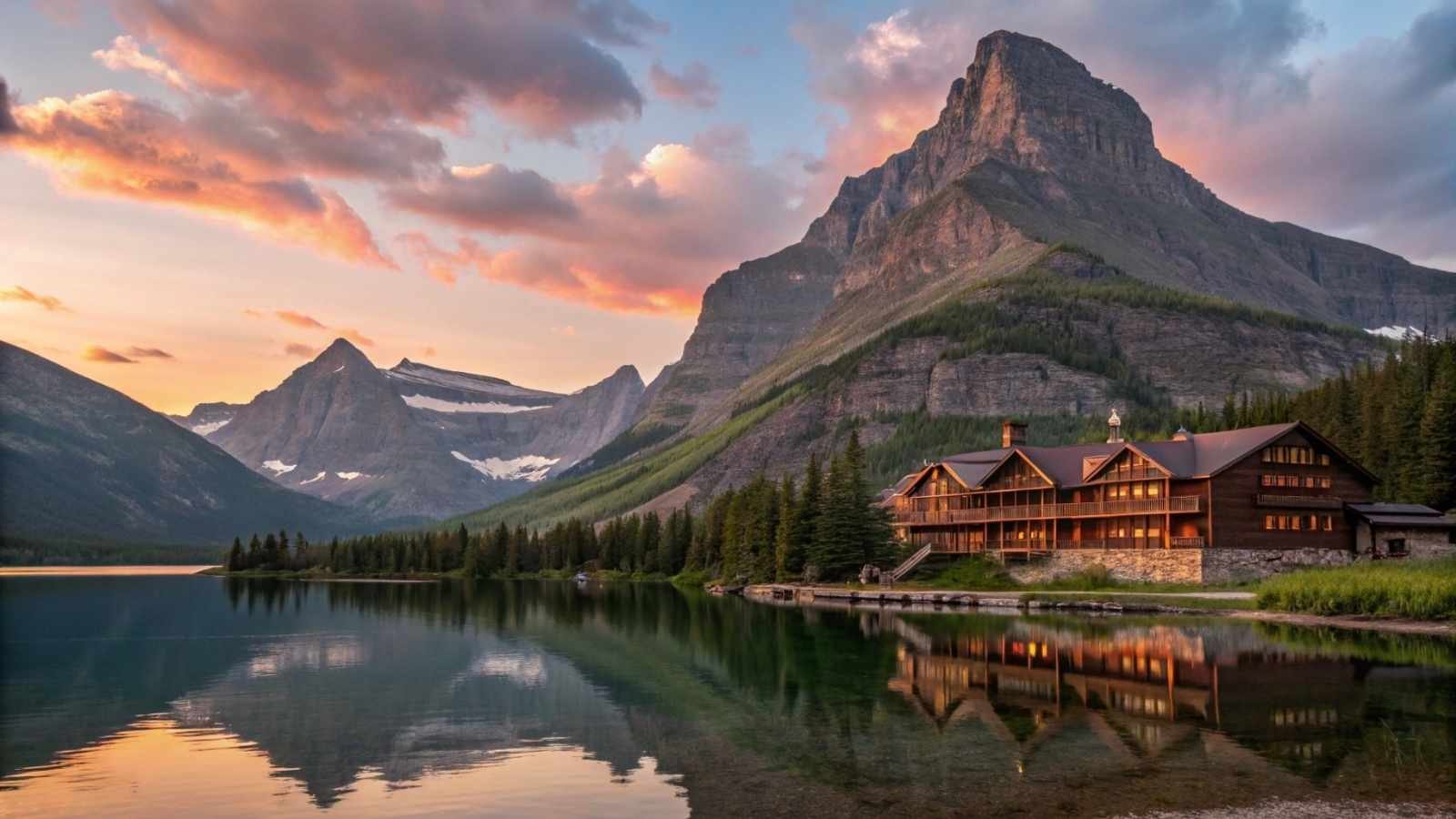
Glacier is a reward heavyweight, offering staggering views even before you lace up your boots. The drive alone along Going-to-the-Sun Road delivers some of the best roadside scenery in America — alpine lakes, wildflower meadows, and glacier-carved peaks that look too perfect to be real. It’s the kind of park that constantly blurs the line between driving and sightseeing.
For those wanting light effort with massive payoff, Trail of the Cedars and Hidden Lake Overlook hit the sweet spot. Even short walks bring you face-to-face with the park’s magic — crystal-clear waters, mountain goats clinging to cliffs, and the sense that you’re standing in a postcard. For moderate hikers, Avalanche Lake offers just the right blend of challenge and serenity.
But what sets Glacier apart is how remote it feels. Even the most popular viewpoints carry a sense of wild isolation. The air feels cleaner, the quiet deeper. And at sunset, when the mountains turn gold, it’s hard not to feel humbled by it all.
Key Info:
- Best Months to Visit: July to September
- Top Easy Hikes: Trail of the Cedars, Hidden Lake Overlook, Avalanche Lake
- Best Scenic Drive: Going-to-the-Sun Road
- Pro Tip: Book park entrance reservations early — they’re required in summer
5. Acadia National Park, Maine
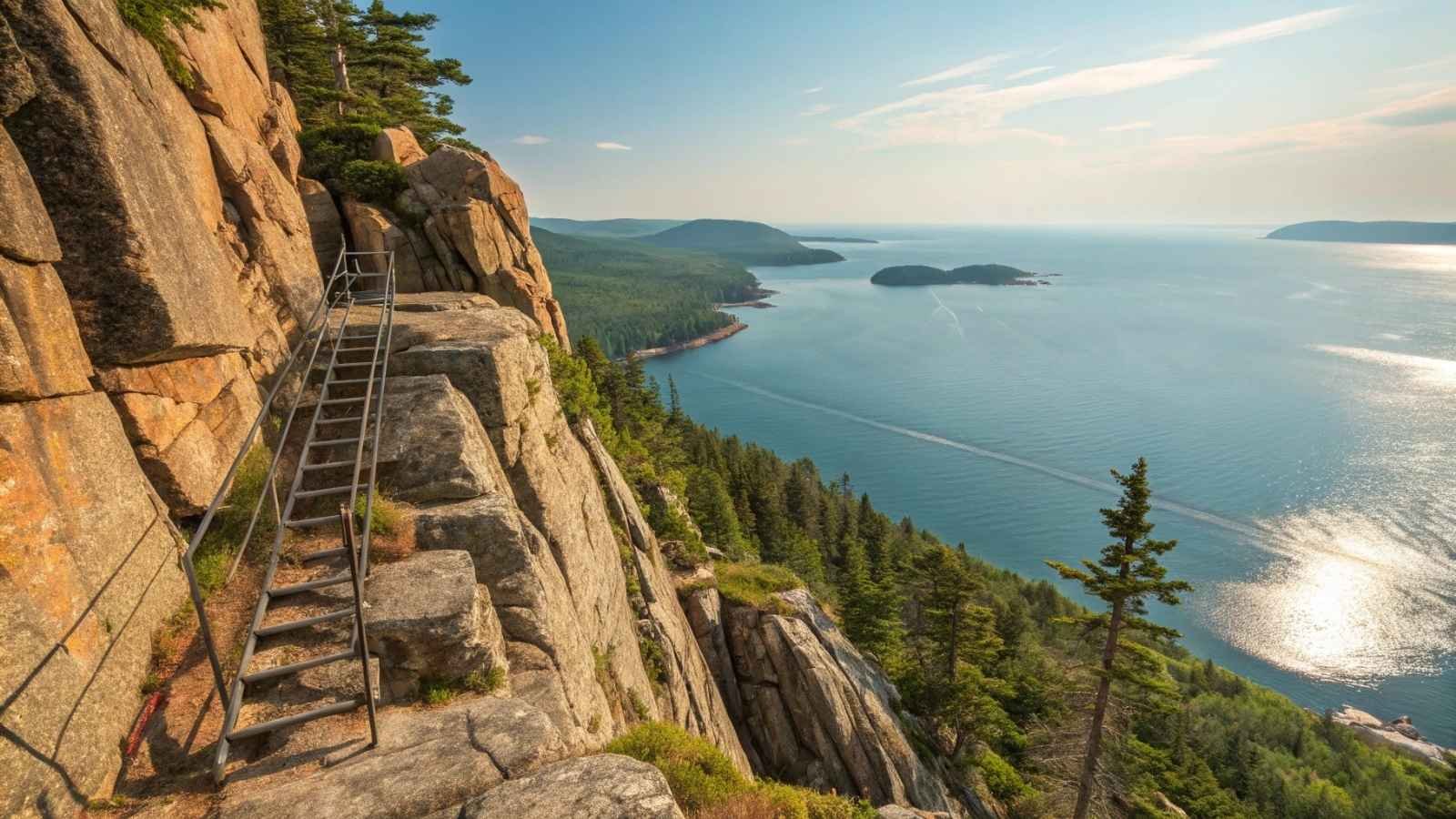
Acadia is where the ocean meets the mountains, and the mix is nothing short of mesmerizing. Compact yet packed with variety, this park gives you rugged cliffs, dense forests, and gentle coastal hikes all within minutes of each other. The reward-to-effort ratio? Exceptionally high. Even a casual drive along Park Loop Road delivers enough views to fill a photo album.
One of Acadia’s biggest perks is its accessibility — short trails like Jordan Pond Path or Ocean Path let you experience wild Atlantic scenery without breaking a sweat. Cadillac Mountain, the park’s crown jewel, can be reached by car or trail, offering sunrise views that are pure gold. Every bend feels designed for discovery, from tide pools at Sand Beach to quiet moments along Echo Lake.
The charm of Acadia also lies in its blend of New England culture and natural beauty. Stop by nearby Bar Harbor for fresh lobster rolls or coastal coffee before heading back into nature. It’s the kind of park where you can have a full adventure and still be back in town by dinner.
Key Info:
- Best Months to Visit: June to October
- Top Easy Hikes: Jordan Pond Path, Ocean Path, Wonderland Trail
- Must-Do: Sunrise on Cadillac Mountain
- Pro Tip: Reserve a sunrise drive ticket for Cadillac Mountain ahead of time
6. Rocky Mountain National Park, Colorado
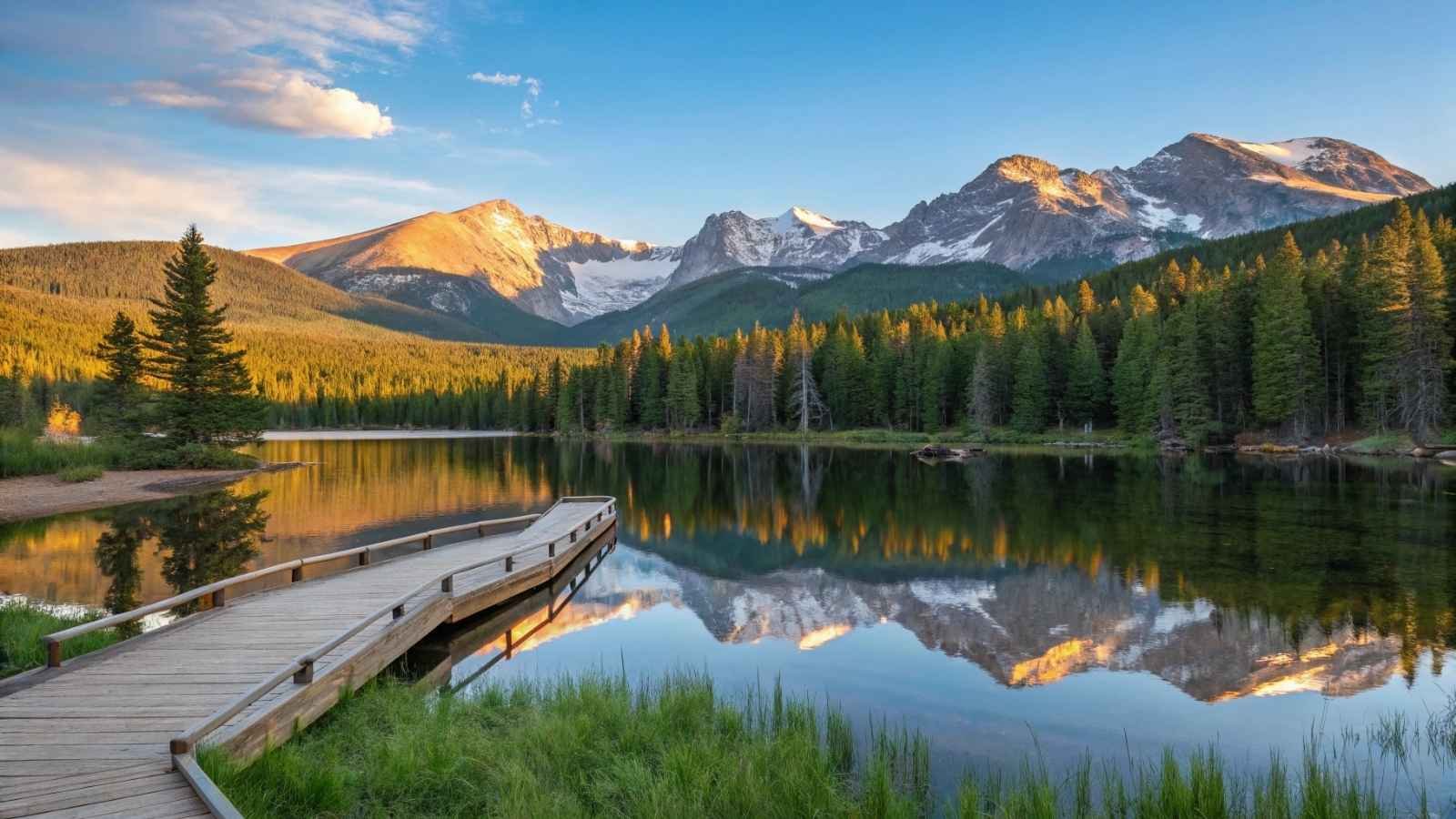
There’s something deeply grounding about standing in the Rockies, breathing that crisp, high-altitude air, and realizing how easily epic views meet accessibility here. You don’t have to scale a summit to feel small in the best way — even a short drive on Trail Ridge Road takes you above the treeline, where panoramic mountain views stretch endlessly. It’s wild beauty without the exhaustion.
The park caters to every level of explorer. Families can stroll around Bear Lake or Sprague Lake and instantly soak in alpine reflections that feel straight out of a fairytale. For a little more effort, trails like Emerald Lake or Alberta Falls deliver incredible reward without draining your energy. Wildlife encounters — elk, marmots, and mule deer — only add to the experience.
Rocky Mountain’s diversity makes it endlessly rewarding. One minute you’re in a quiet meadow; the next, you’re surrounded by snow-capped peaks and glacial lakes. It’s a park that truly gives back for every ounce of effort you invest.
Key Info:
- Best Months to Visit: June to September
- Top Easy Hikes: Bear Lake Loop, Sprague Lake, Alberta Falls
- Best Scenic Drive: Trail Ridge Road (one of the highest paved roads in North America)
- Pro Tip: Start early — afternoon thunderstorms are common in summer
7. Bryce Canyon National Park, Utah
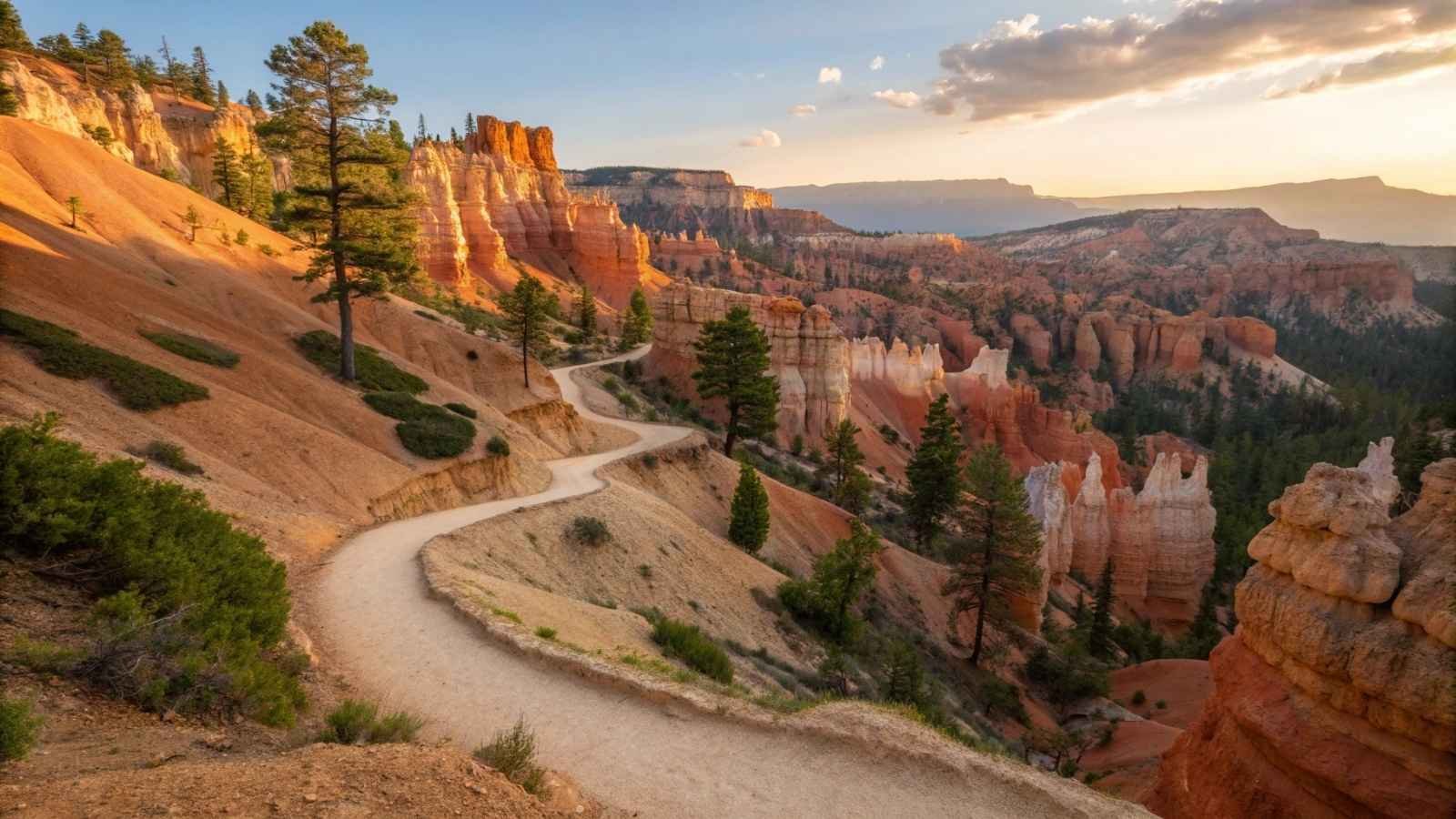
Bryce Canyon isn’t really a canyon — it’s an amphitheater of color, texture, and thousands of hoodoos (those surreal rock spires that glow in shades of orange and red). The best part? Most of its “wow moments” are right at your fingertips. Step up to Sunrise Point or Bryce Point, and the view feels like a dream — no strenuous hiking required.
For those wanting just a touch more movement, the Navajo Loop Trail and Queen’s Garden Trail wind among the hoodoos, giving you that “inside the landscape” feeling without extreme effort. The path is short but immersive — the kind that keeps you stopping just to take in another angle of the glowing stone.
Bryce is small enough to explore in a day, yet so visually rich you’ll want to linger. The air is thin, the silence profound, and at night, the stargazing is some of the clearest in the country. It’s beauty that feels effortless, yet deeply memorable.
Key Info:
- Best Months to Visit: May to September
- Top Easy Hikes: Queen’s Garden Trail, Rim Trail between Sunrise and Sunset Points
- Best Viewpoints: Sunrise Point, Bryce Point, Inspiration Point
- Pro Tip: Stay after dark — Bryce is a certified International Dark Sky Park
8. Olympic National Park, Washington
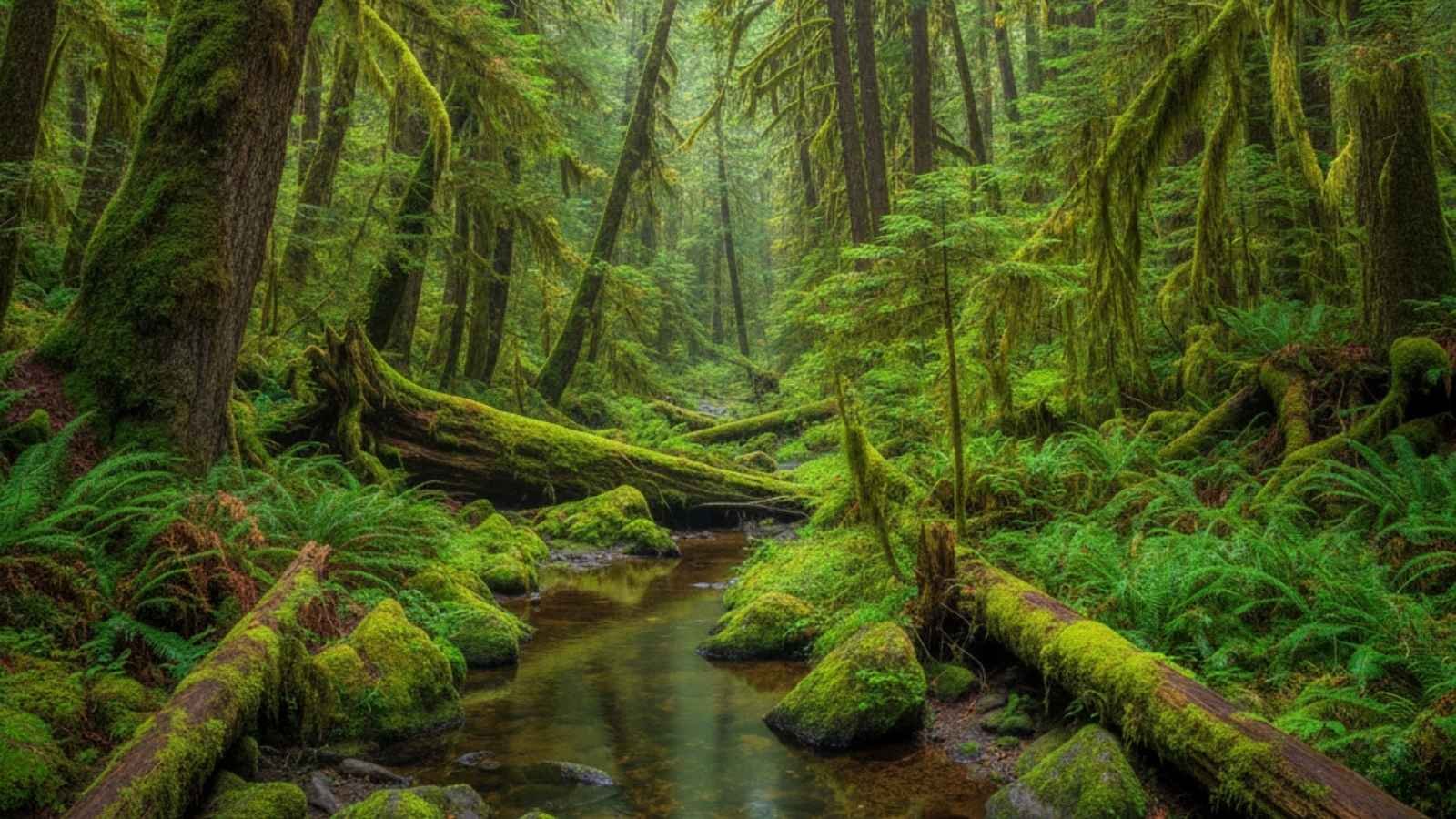
Olympic might be the most ecologically diverse national park in the U.S. — and the best part is, most of it is ridiculously easy to experience. In one day, you can stroll a rainforest dripping with moss, walk a driftwood-strewn beach, and end up on a glacier-capped mountain. It’s like visiting three parks in one.
The Hoh Rain Forest delivers that storybook kind of magic — giant trees, soft green light, and trails that feel like stepping into another world. Then there’s Rialto Beach, where sea stacks rise from misty surf, and the short Hole-in-the-Wall hike rewards you with ocean-carved drama for minimal effort. Cap it off with a drive up to Hurricane Ridge, and you’ll stand above the clouds watching deer graze against alpine peaks.
Olympic’s greatest gift is accessibility to variety. You get rainforest, coastline, and mountain scenery all within a few hours of each other — the definition of high reward for minimal work.
Key Info:
- Best Months to Visit: July to September
- Top Easy Hikes: Hoh Rain Forest Trail, Hole-in-the-Wall, Hurricane Ridge Nature Trail
- Can’t-Miss: Sunset at Rialto Beach
- Pro Tip: Bring layers — the park’s weather zones can change dramatically in a single day
9. Great Smoky Mountains National Park, Tennessee/North Carolina
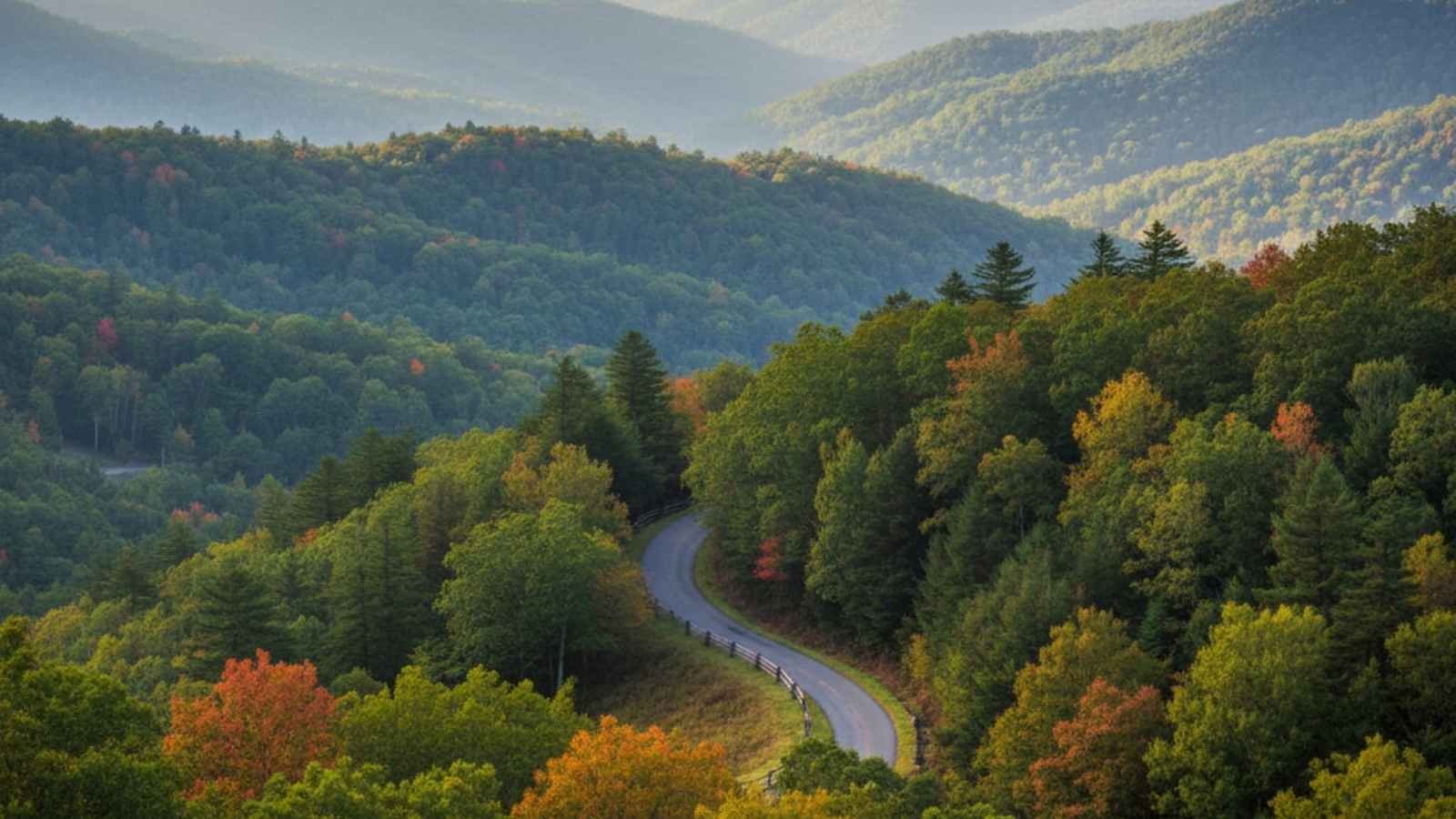
The Smokies have a way of sneaking up on you — not in dramatic peaks, but in their misty, soulful beauty. Rolling ridges stretch into the horizon, and waterfalls tumble through lush forest without requiring intense hikes. It’s the kind of place that rewards slow travel — no rush, just quiet awe.
Many of the park’s highlights are easily reached. Clingmans Dome, the highest point in the park, is just a short paved walk from the parking lot and offers one of the most stunning panoramas in the East. Trails like Laurel Falls or Cataract Falls take you straight to postcard-worthy scenes with barely a mile underfoot. Wildlife like black bears and wild turkeys often make appearances, adding to that feeling of raw wilderness.
The Smokies also shine in the details — firefly shows in June, fall colors in October, or morning fog that hangs like silk across the valleys. The effort? Minimal. The reward? Immense.
Key Info:
- Best Months to Visit: April to June, September to October
- Top Easy Hikes: Laurel Falls, Grotto Falls, Clingmans Dome
- Best Scenic Drive: Newfound Gap Road
- Pro Tip: Visit early morning for fewer crowds and mist-covered views
10. Arches National Park, Utah
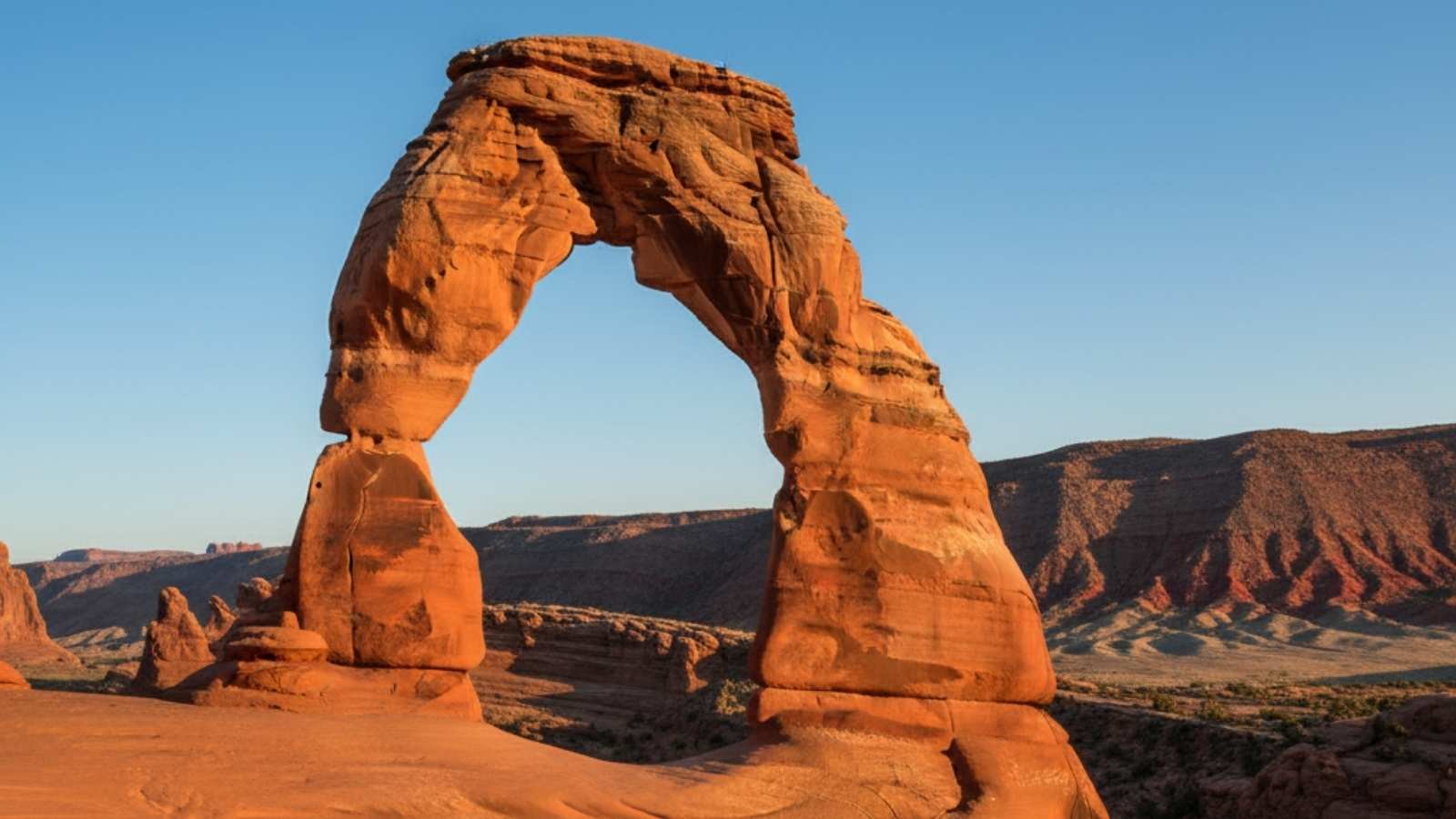
Arches feels like stepping into a red rock playground sculpted by time — and the best part is, it’s incredibly easy to explore. With over 2,000 natural stone arches, plus balanced rocks and fins, the park gives you world-class views with very little effort. Even the drive itself, Arches Scenic Road, offers jaw-dropping vistas at nearly every turn.
The park’s iconic Delicate Arch hike is a moderate challenge, but most other highlights are refreshingly simple. Double Arch, The Windows, and Balanced Rock are all short walks with massive payoff — ideal for travelers who want that “wow” factor without a strenuous trek. Sunrise and sunset here are pure magic as the rocks glow deep red and orange.
Compact, photogenic, and endlessly walkable, Arches might be one of the most rewarding parks per square mile in the U.S. It’s an accessible adventure, distilled perfectly.
Key Info:
- Best Months to Visit: March to May, September to November
- Top Easy Hikes: Double Arch, The Windows, Balanced Rock Loop
- Best View: Delicate Arch at sunset
- Pro Tip: Arrive early — entry lines can stretch for miles during peak season
11. Yellowstone National Park, Wyoming / Montana / Idaho

Yellowstone feels like stepping into the Earth’s heartbeat — geysers, hot springs, and thundering waterfalls that make you realize how alive the planet really is. It’s massive, untamed, and endlessly fascinating. The sheer diversity here — from steaming geothermal basins to herds of bison roaming across open plains — makes every stop feel like a discovery.
The beauty of Yellowstone is that you don’t need to trek deep into the wilderness to feel its magic. Old Faithful, Grand Prismatic Spring, and Mammoth Hot Springs are all easy-access wonders that look like science fiction brought to life. For a moderate challenge, Uncle Tom’s Trail or Artist Point along the Grand Canyon of the Yellowstone delivers heart-thumping views for minimal effort. It’s an adventure that feels both wild and wonderfully approachable.
And then there’s the wildlife — grizzlies, wolves, elk, and eagles all thriving in one of the most intact ecosystems in the world. Yellowstone’s real magic is how easily it humbles you; every geyser eruption or thundering waterfall reminds you that this planet still runs on raw power.
Key Info:
- Best Months to Visit: June to September
- Top Easy Hikes: Grand Prismatic Overlook, Artist Point, Mammoth Hot Springs Terraces
- Can’t-Miss Sights: Old Faithful, Grand Canyon of the Yellowstone, Lamar Valley for wildlife
- Pro Tip: Start days early — wildlife is most active around dawn
12. Joshua Tree National Park, California
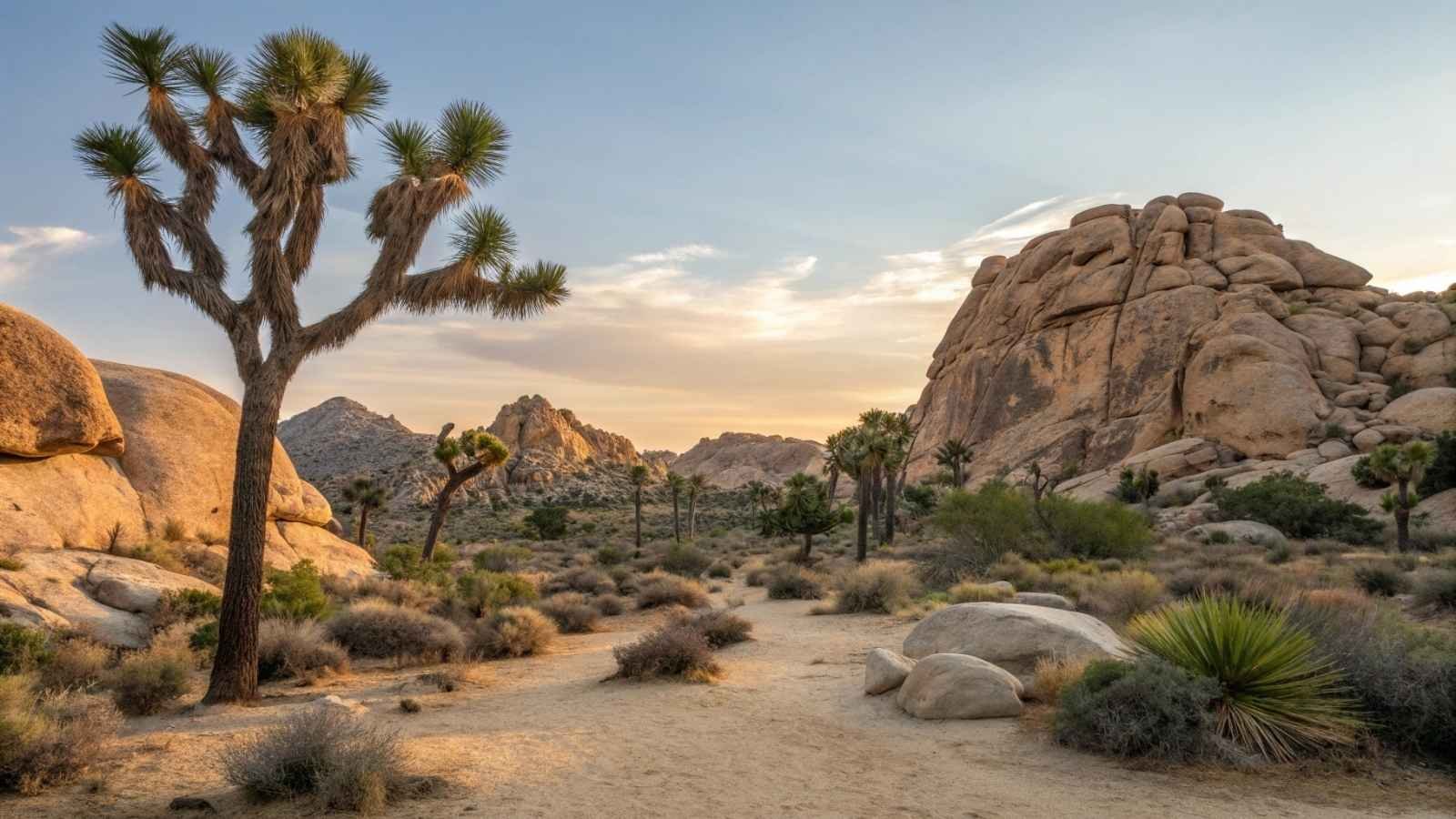
Joshua Tree has a rhythm all its own — otherworldly rock formations, spiky trees that seem frozen mid-dance, and a silence so profound it feels spiritual. It’s the kind of place where effort takes a backseat and stillness becomes the reward. A stroll among Hidden Valley or Barker Dam gives you a sense of the park’s surreal, desert beauty without needing a hardcore hike.
The landscape invites exploration at your own pace. Skull Rock and Cholla Cactus Garden are short walks that showcase just how strange and stunning the desert can be. And when the sun goes down, the real show begins — Joshua Tree’s night skies are some of the clearest in North America, making stargazing here unforgettable.
There’s a certain peace that settles over you in Joshua Tree. The combination of vast space, sculpted rock, and shimmering stars delivers a kind of mental clarity few places can match — proof that reward doesn’t always require effort, just presence.
Key Info:
- Best Months to Visit: March to May, October to November
- Top Easy Hikes: Hidden Valley, Barker Dam, Skull Rock
- Best Sunset Spot: Keys View
- Pro Tip: Bring extra water — desert heat can surprise even in cooler months
13. Mount Rainier National Park, Washington
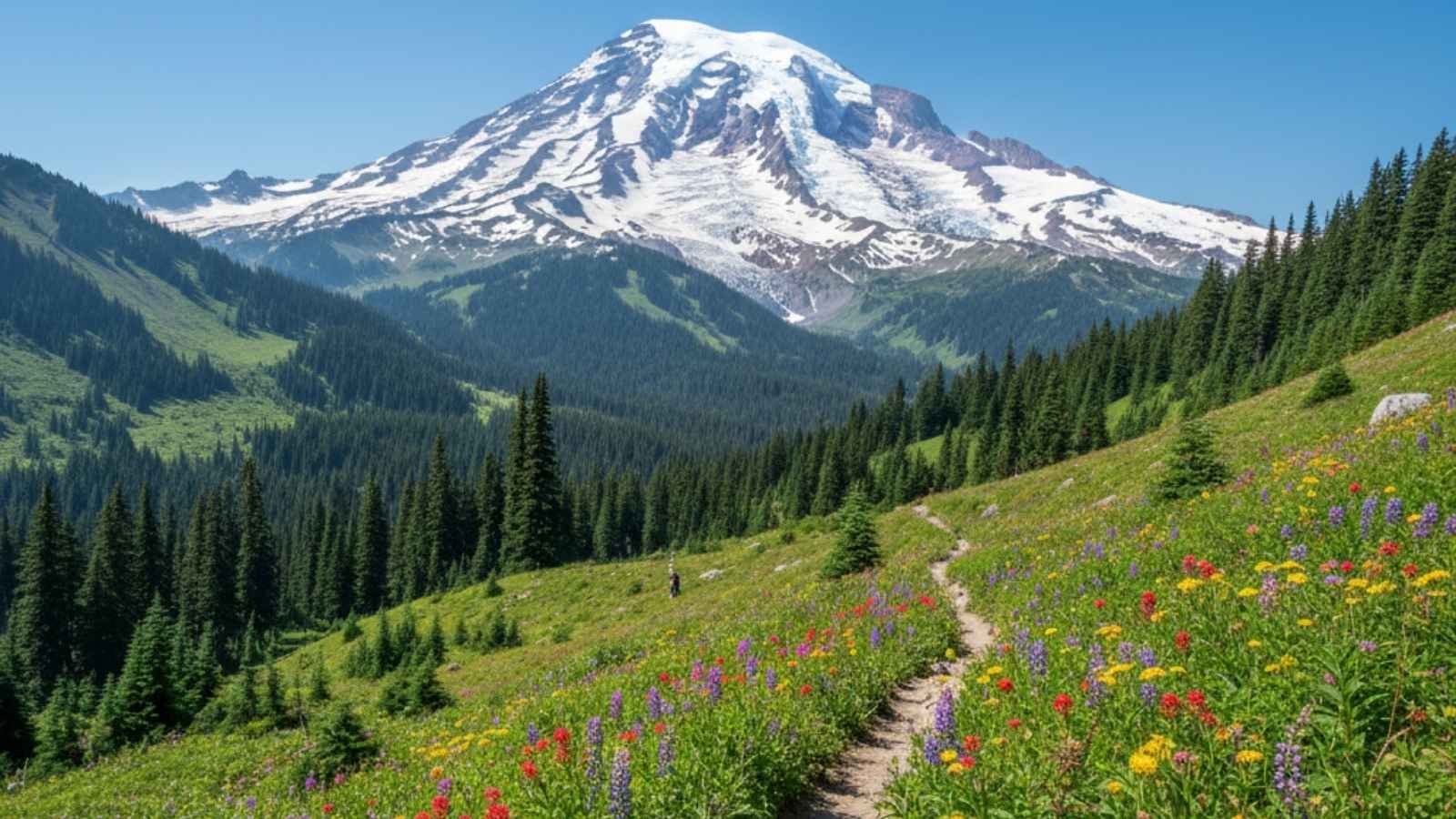
When Mount Rainier reveals itself, it doesn’t just appear — it dominates the horizon. This 14,410-foot volcano commands the landscape and rewards visitors with alpine meadows, waterfalls, and glaciers that seem close enough to touch. While climbing the mountain is for experts, casual visitors can still enjoy breathtaking rewards for little effort.
The Paradise area lives up to its name — meadows bursting with wildflowers in summer and trails that frame the mountain like a living postcard. The Nisqually Vista Trail and Grove of the Patriarchs are short, easy walks that pack in tremendous scenery. For those willing to hike a bit more, Skyline Trail offers the kind of view that sticks with you for life.
Rainier has that rare mix of accessibility and grandeur. It’s a park that meets you wherever you are — whether you’re just here for a scenic drive or ready to tackle something tougher. Either way, it delivers a reward far bigger than the effort it asks.
Key Info:
- Best Months to Visit: July to September
- Top Easy Hikes: Nisqually Vista, Grove of the Patriarchs, Myrtle Falls
- Can’t-Miss Area: Paradise Wildflower Meadows
- Pro Tip: Check weather updates — visibility can change dramatically
14. Canyonlands National Park, Utah
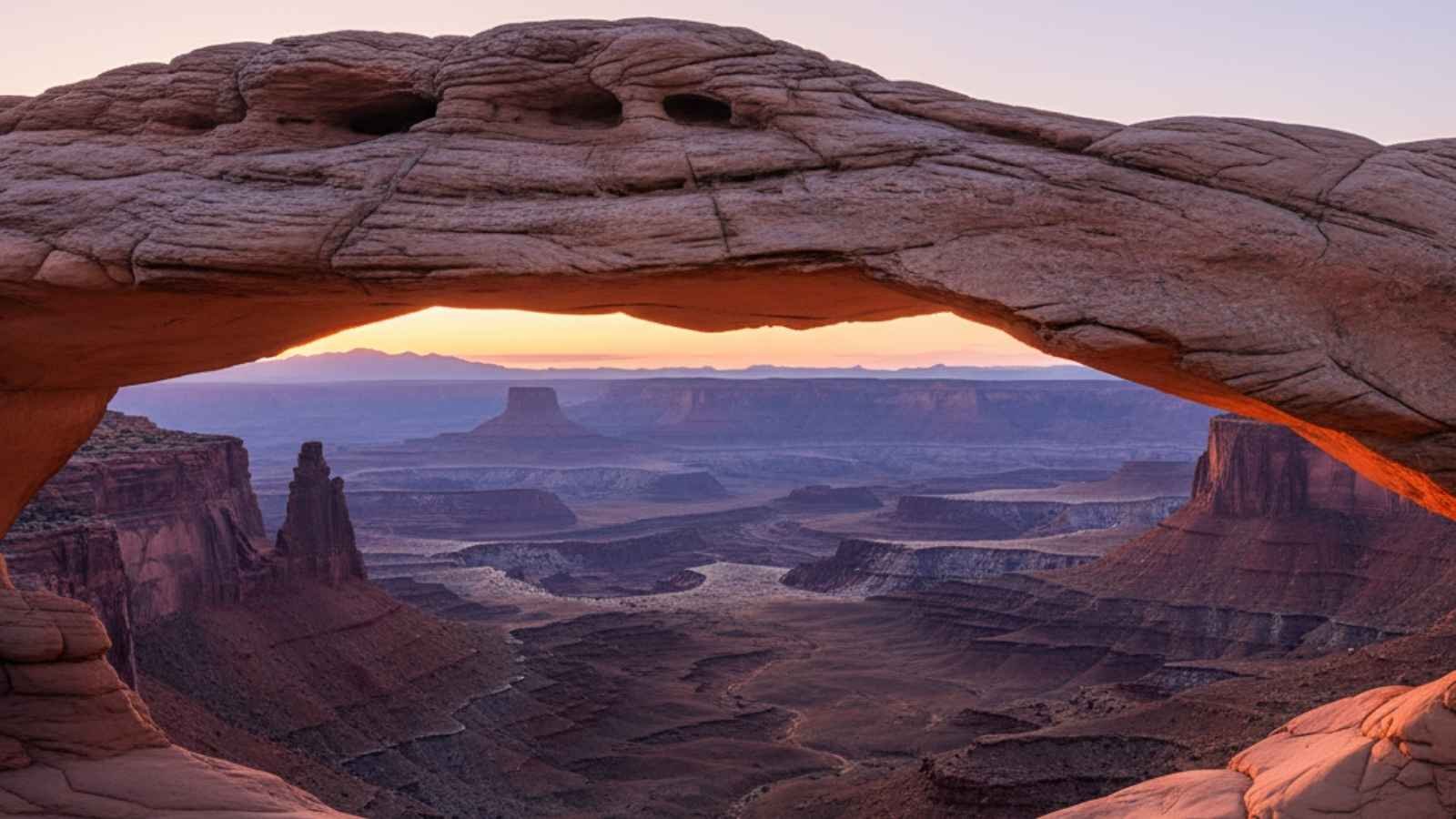
Canyonlands is the quiet giant of Utah’s national parks — vast, wild, and dramatically beautiful, yet often overshadowed by nearby Arches. But for those who make the trip, the effort-to-reward balance is astonishingly good. Most of the park’s top views require little more than a short walk from the car.
The Island in the Sky district offers surreal panoramas like Mesa Arch, where sunrise turns the landscape fiery orange. The hike is short, but the view looks like a scene from another planet. Other must-sees like Grand View Point and Green River Overlook, are equally stunning and easy to reach. It’s a photographer’s dream without the grueling climb.
The scale here is impossible to grasp — canyons stacked within canyons, rivers carving stories thousands of years old. Yet, despite its enormity, Canyonlands gives you access to those cinematic vistas with minimal strain — the definition of reward on your terms.
Key Info:
- Best Months to Visit: April to May, September to October
- Top Easy Hikes: Mesa Arch, Grand View Point Trail, Green River Overlook
- Best Sunrise Spot: Mesa Arch
- Pro Tip: Bring snacks and water — facilities are limited inside the park
15. Sequoia National Park, California
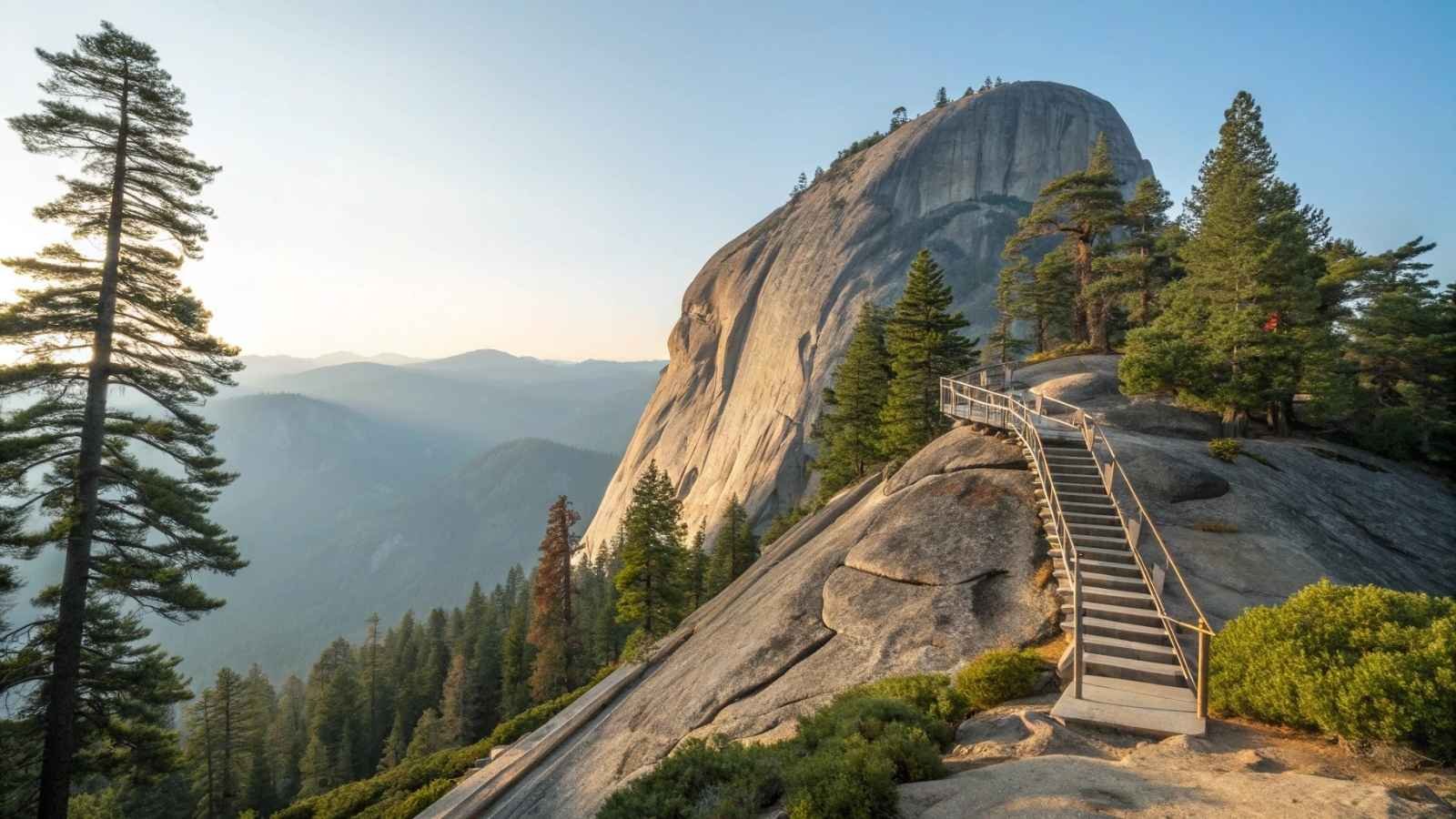
Sequoia feels like walking through time. The park’s colossal trees — some over 2,000 years old — tower so high they seem to brush the sky. Standing beneath General Sherman, the world’s largest tree, is a humbling experience that takes almost no effort to reach. The park’s accessibility makes its rewards feel all the more extraordinary.
Even short walks like the Big Trees Trail or Congress Trail surround you with these ancient giants. The air smells of pine and earth, the light filters through in soft gold — it’s a quiet kind of awe that doesn’t require much movement. And for a slightly higher vantage point, Moro Rock offers a panoramic sweep of the Sierra Nevada that’s absolutely worth the climb.
Sequoia National Park isn’t about adrenaline; it’s about scale and serenity. It reminds you how small — and lucky — we are to walk among living things that have stood for millennia.
Key Info:
- Best Months to Visit: May to October
- Top Easy Hikes: Big Trees Trail, Congress Trail, General Sherman Tree Trail
- Can’t-Miss: Moro Rock viewpoint
- Pro Tip: Combine your trip with neighboring Kings Canyon for a full redwood experience
16. Grand Canyon National Park, Arizona
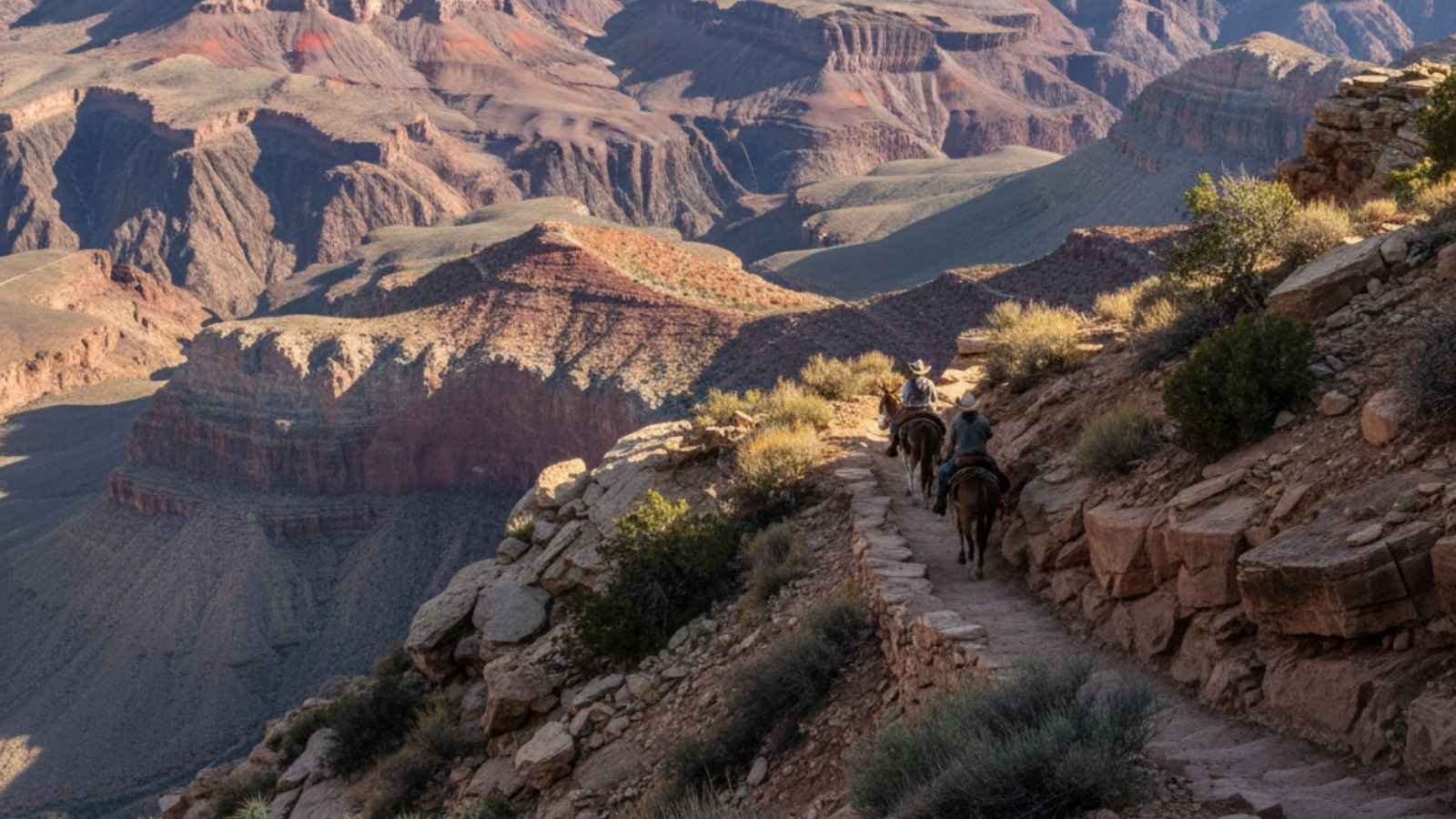
There’s no easing into the Grand Canyon — it hits you all at once. One moment you’re walking along a simple desert path, and the next, the ground just falls away into a chasm so vast it rewires your sense of scale. It’s humbling, almost surreal. And the beauty of it? The best views are right there at the rim, requiring little more than a short stroll.
The South Rim offers easy-access lookouts like Mather Point, Yavapai Point, and Desert View, each giving a new perspective on this immense landscape. For those craving a bit more movement, the Bright Angel Trail or South Kaibab Trail delivers deeper immersion — but even a short section of either leaves a lasting impression. Sunrise or sunset turns the canyon walls molten gold — a reminder that reward doesn’t always mean distance.
The Grand Canyon is less about conquering trails and more about surrendering to scale. You don’t go here to feel big; you go to feel part of something timeless.
Key Info:
- Best Months to Visit: March to May, September to November
- Top Easy Hikes: Rim Trail, Mather Point to Yavapai Point
- Best Viewpoints: Hopi Point (sunset), Desert View (panoramic)
- Pro Tip: Visit the quieter North Rim if you prefer solitude — it’s open May to October
17. Capitol Reef National Park, Utah
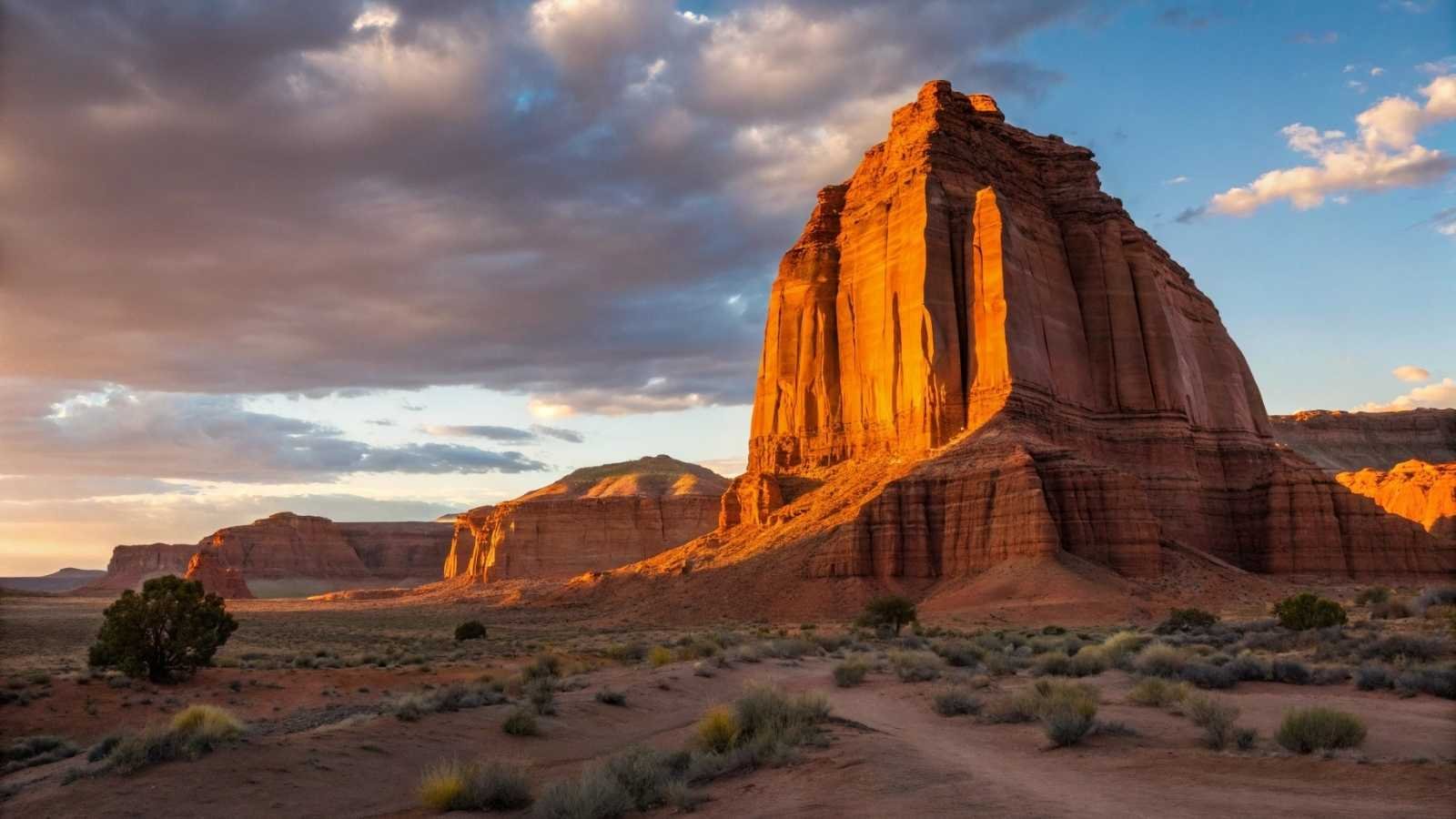
Capitol Reef is often called Utah’s “hidden gem,” and that’s no exaggeration. It’s less crowded, more peaceful, and stunningly diverse — from crimson cliffs and white domes to orchards where you can literally pick your own fruit. The effort-to-reward balance here is almost unfairly good.
Most of the park’s highlights sit right off the scenic drive. Panorama Point, Goosenecks Overlook, and Capitol Gorge deliver huge visual payoff for very little work. For a short hike that feels more adventurous, the Hickman Bridge Trail leads to a natural arch framed by golden rock — it’s manageable, yet endlessly photogenic. Add in the historic Fruita District, where deer wander through old homesteads, and you’ve got a park that feels both grand and grounded.
Capitol Reef is a place to slow down. To take in the silence. To realize that some of the best rewards come not from climbing higher, but from looking closer.
Key Info:
- Best Months to Visit: April to June, September to October
- Top Easy Hikes: Hickman Bridge, Capitol Gorge, Grand Wash
- Don’t Miss: Fresh fruit picking in Fruita (seasonal)
- Pro Tip: Drive the Scenic Byway 24 — every curve feels like a discovery
18. Shenandoah National Park, Virginia
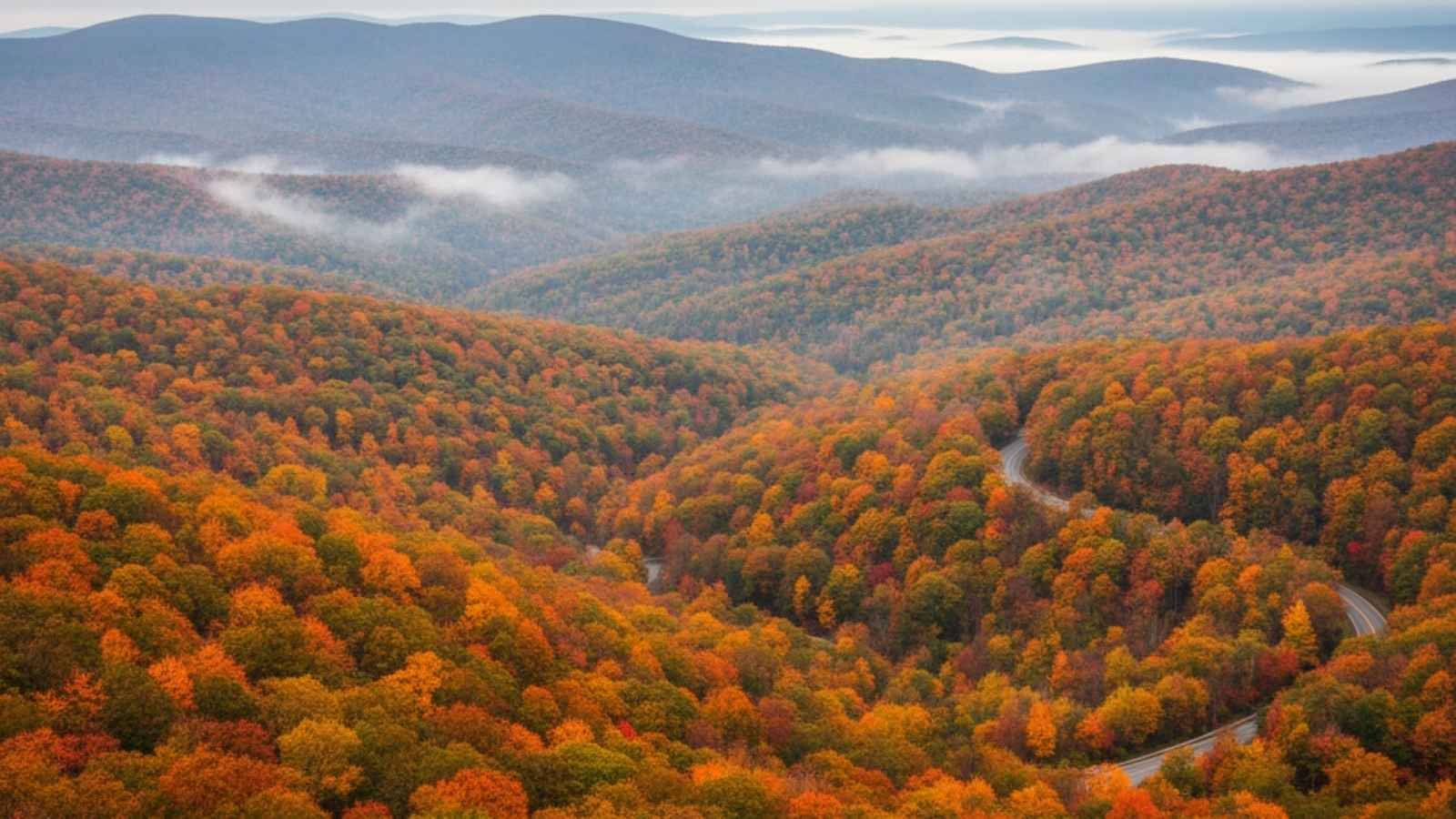
If you love lush forests, waterfalls, and panoramic drives, Shenandoah delivers all of it with minimal exertion. It’s one of those parks designed for taking your time — for winding along Skyline Drive while the Blue Ridge Mountains roll endlessly in the distance. You don’t need to hike miles to feel the magic; the views practically come to you.
That said, the park rewards a little movement. Trails like Stony Man, Dark Hollow Falls, and Blackrock Summit offer short, satisfying climbs that reveal stunning outlooks over the Shenandoah Valley. In autumn, the entire park bursts into fiery color — reds, oranges, and golds that turn even the simplest walk into a painter’s dream.
Shenandoah is gentle but deeply restorative — a place where the reward is peace itself. It’s the kind of national park that resets your pace and clears your head in the best possible way.
Key Info:
- Best Months to Visit: April to November (especially mid-October for fall color)
- Top Easy Hikes: Stony Man, Dark Hollow Falls, Blackrock Summit
- Best Scenic Drive: Skyline Drive (105 miles of overlooks)
- Pro Tip: Stay overnight — sunrise through mountain fog is unforgettable
19. Badlands National Park, South Dakota
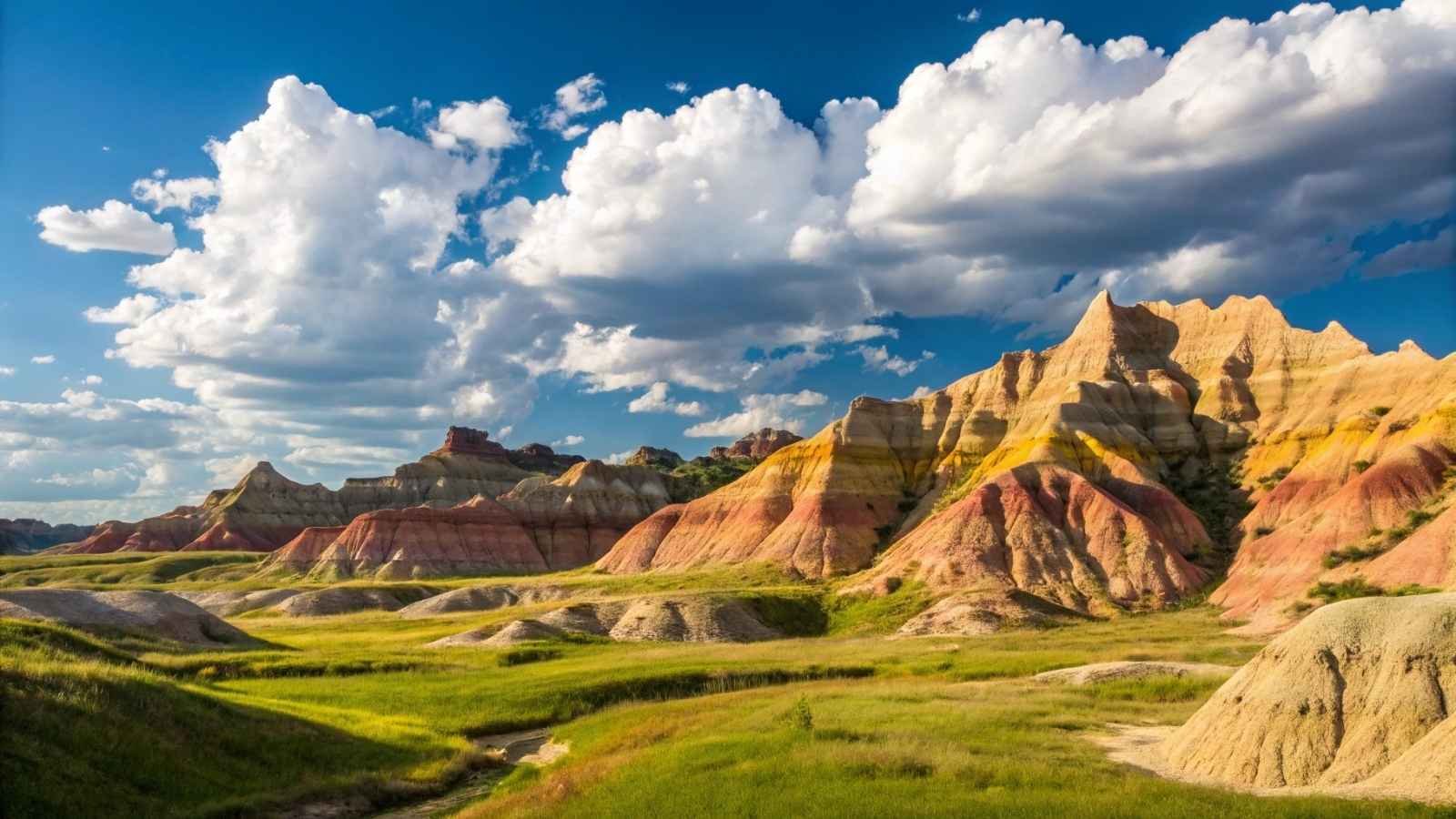
Badlands might sound foreboding, but in truth, it’s wildly beautiful and surprisingly easy to explore. Layers of striped rock and eroded buttes stretch across the horizon like a painter went rogue with color. The best part? Most of the park’s jaw-dropping vistas are just a few steps from your car.
Short trails like Door Trail and Window Trail take you right into the heart of this rugged landscape with minimal effort. The Notch Trail adds a touch of excitement — a ladder climb and sweeping views — without being overly demanding. Wildlife spotting is part of the fun here, too: bison, prairie dogs, and bighorn sheep often steal the show.
Badlands is cinematic in scale yet approachable in practice. The terrain feels ancient and alien, but the experience is delightfully human — simple, surprising, and spectacularly photogenic.
Key Info:
- Best Months to Visit: May to September
- Top Easy Hikes: Door Trail, Window Trail, Fossil Exhibit Trail
- Best Scenic Drive: Badlands Loop Road (Highway 240)
- Pro Tip: Visit near sunset — the rocks glow like embers in fading light
20. Death Valley National Park, California / Nevada
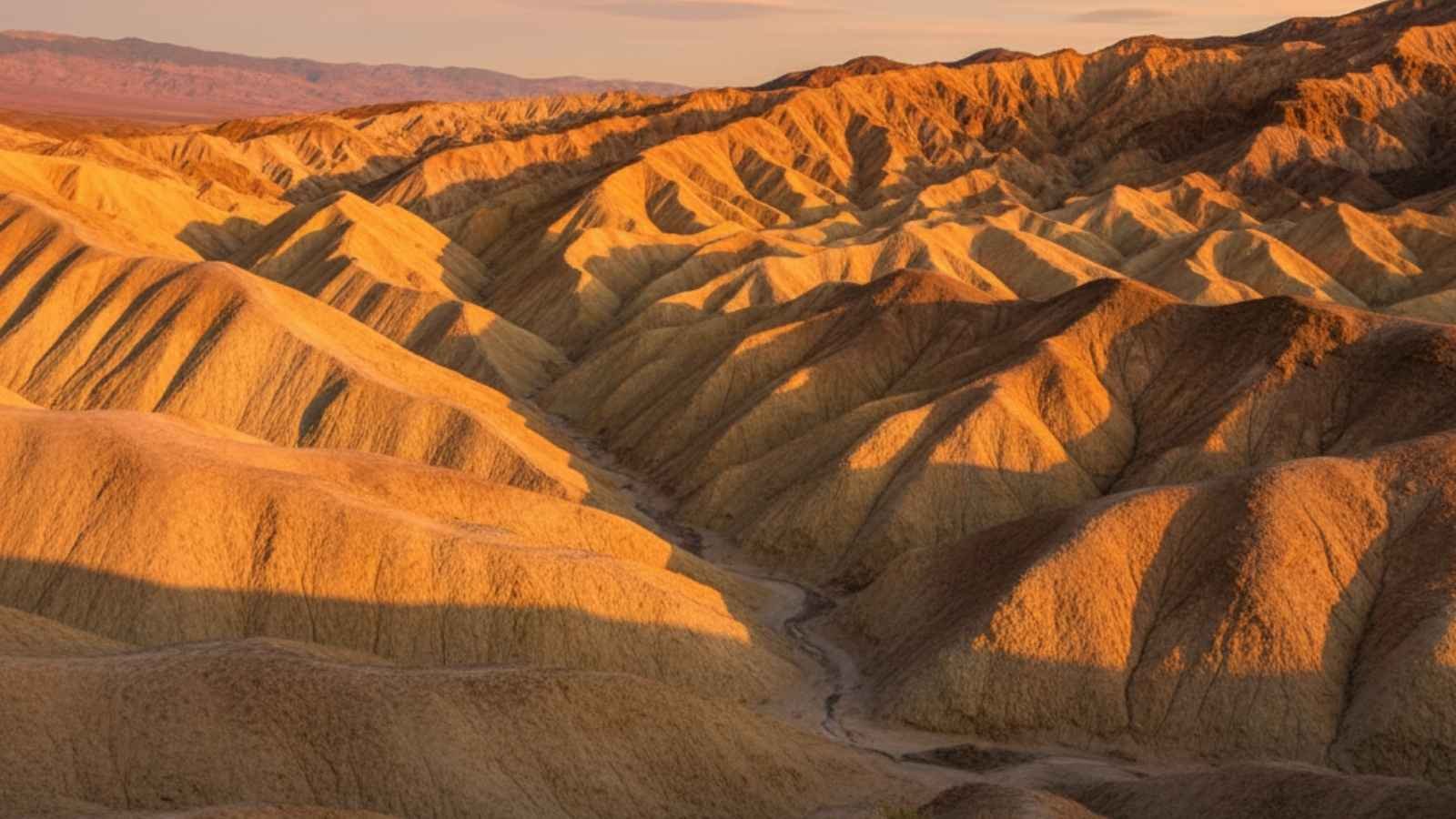
Death Valley doesn’t just test your limits — it redefines what beauty looks like. Stark, immense, and strangely elegant, it’s a landscape of extremes: the hottest, driest, and lowest place in North America. Yet it’s filled with effortless rewards for those who know when to visit and where to go.
Drive through Artist’s Palette, and the mineral-streaked hills look like a desert rainbow. Walk out onto Badwater Basin, where salt flats stretch for miles in mesmerizing geometric patterns. And for those chasing easy-to-reach drama, Zabriskie Point and Dante’s View serve up panoramas that feel almost otherworldly — no strenuous hiking required.
The secret to Death Valley’s allure is timing. Come in cooler months, and you’ll find tranquil solitude, cinematic light, and surreal stillness that few places on Earth can match. It’s proof that effort isn’t everything — sometimes the reward lies in simply standing still.
Key Info:
- Best Months to Visit: November to March
- Top Easy Hikes: Golden Canyon, Mesquite Flat Sand Dunes, Badwater Basin
- Best Viewpoints: Zabriskie Point, Dante’s View, Artist’s Palette Drive
- Pro Tip: Always carry extra water — and start early to beat the desert heat



